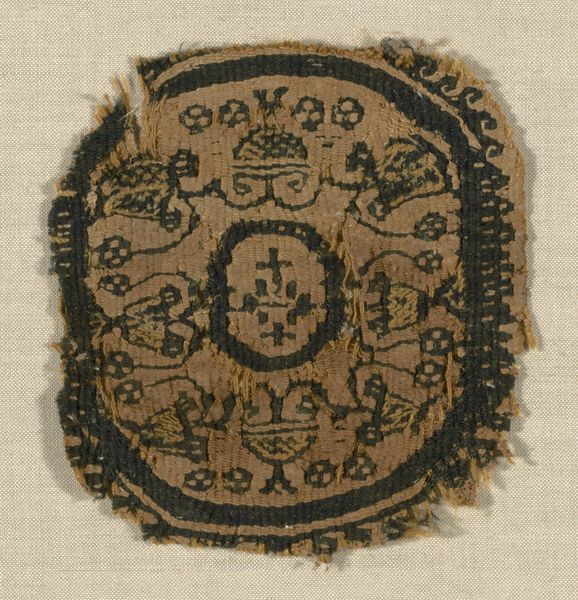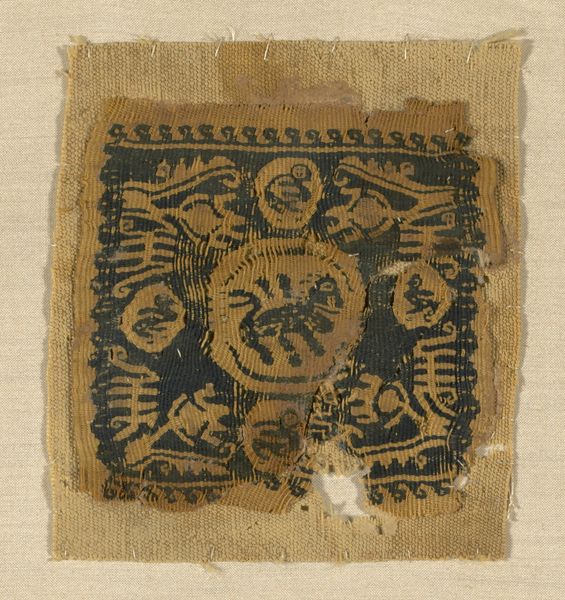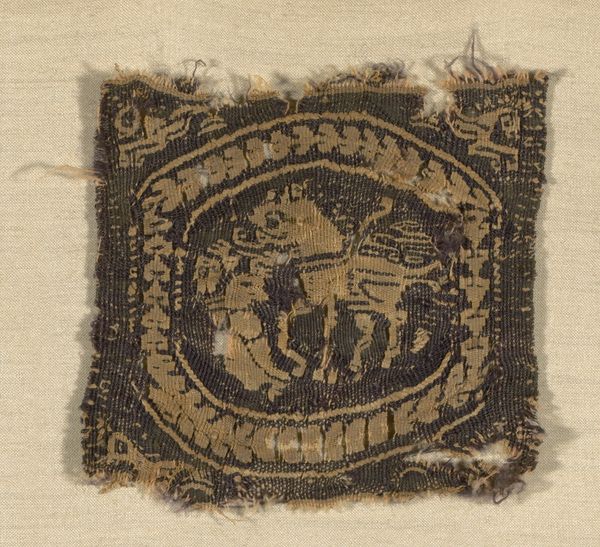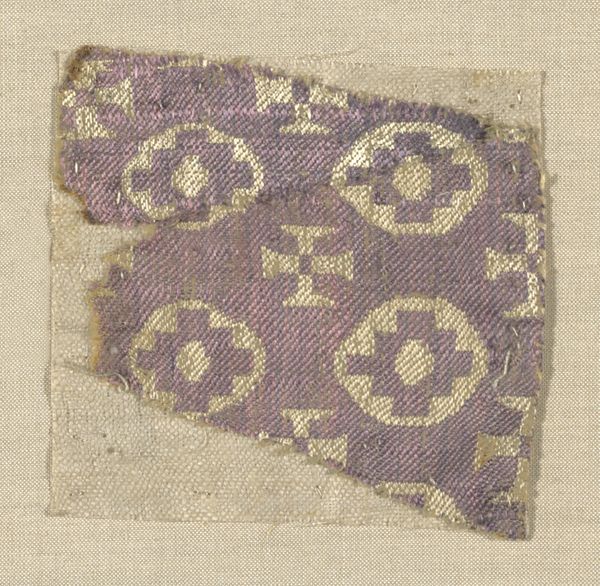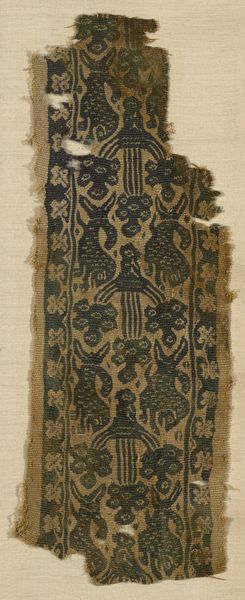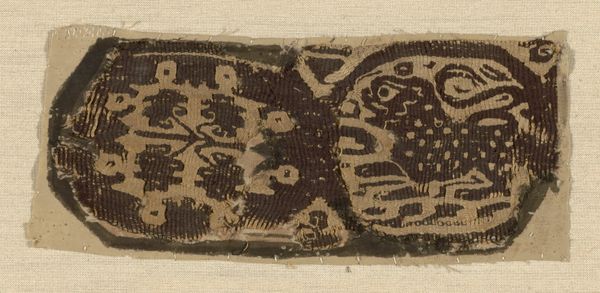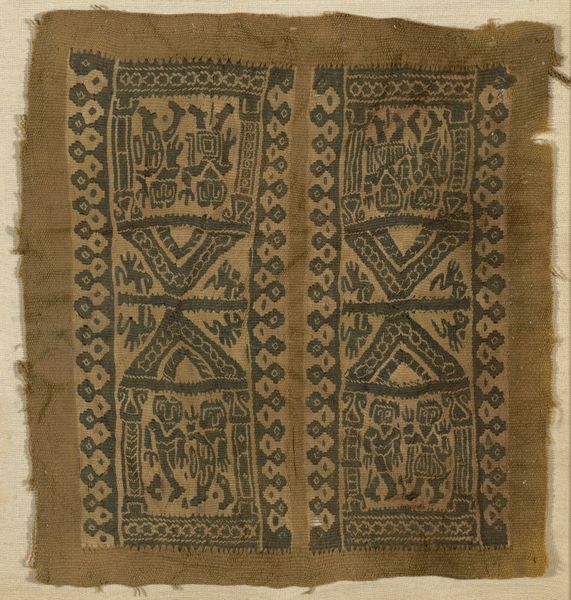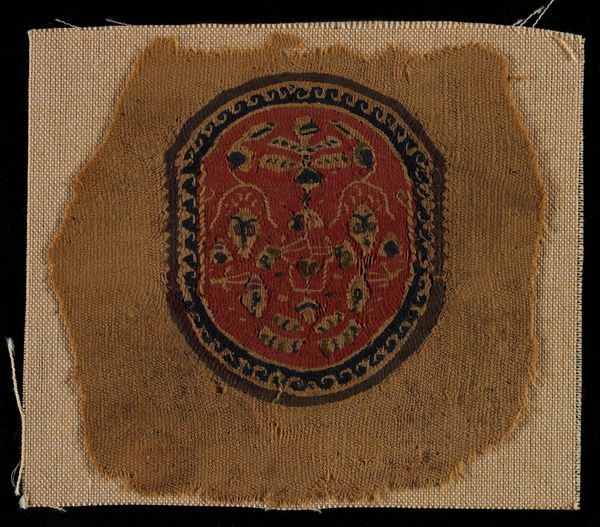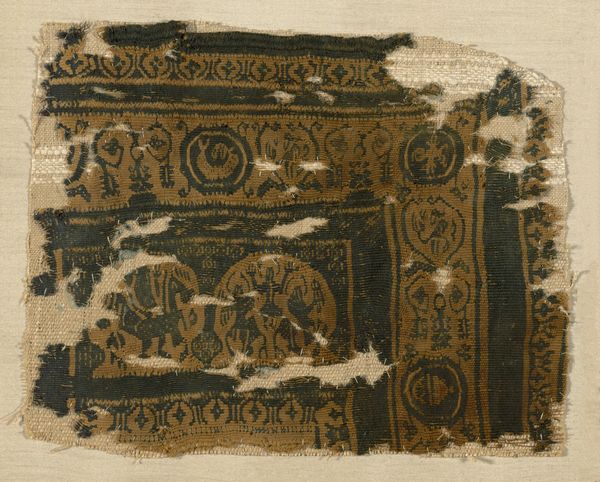
Square Panel Roman period (30 B.C.– 641 A.D.)/Arab period (641–969), 4th/8th century
0:00
0:00
weaving, textile
#
weaving
#
textile
#
geometric
#
mixed media
Dimensions: 12.8 × 10.3 cm (5 × 4 in.)
Copyright: Public Domain
Curator: Here we have a Coptic textile known as "Square Panel," a wool weaving originating from Egypt. Its creation spans both the Roman and Arab periods, dating roughly from the 4th to the 8th century. Editor: The immediate impression I get is of something ancient and worn, a survivor. The colors are muted, but you can still make out intricate geometric and floral patterns contained within what looks like a dark border. It's very tactile. Curator: Indeed, its age lends it a unique character. It’s fascinating how Coptic textiles, such as this one, blend Egyptian artistic traditions with Greco-Roman influences, particularly in their motifs. We can see stylized plant forms – symbols of rebirth and life, adopted early on in Coptic iconography from earlier Pharaonic beliefs. Editor: Do you see continuity in Egyptian art across different cultural regimes, where visual elements take on different ideological purposes under varying imperial regimes? I see this “Square Panel” and wonder if similar imagery served distinctly new purposes, perhaps marking a synthesis of Egyptian and early Christian visual culture? Curator: Absolutely, it speaks volumes about the cultural memory at play here. Take the geometric patterns—their roots could extend far back into Egyptian visual traditions, re-emerging here transformed. It's worth investigating what the geometric shapes would have stood for originally, versus how those shapes might have taken on religious importance for the Copts. The interplay of pagan and Christian symbolism in Coptic art tells of a complex social world in Egypt at that time. Editor: And the fragmented condition is telling too; this wasn't preserved in a pristine, controlled environment. It's a scrap that’s seen use, maybe been traded or traveled. This wasn't something displayed in a museum or gallery. Its survival tells us so much more about the mundane reception and day-to-day lives in Egypt. It is such a common thing, but it survives and we interpret it as an artwork, now. Curator: Yes, the panel's survival is significant. The materiality offers a tactile connection to the past. Its current form only adds to its profound visual and cultural message. Editor: It is a good reminder of how art shifts function across centuries, constantly taking on new identities based on new viewers.
Comments
No comments
Be the first to comment and join the conversation on the ultimate creative platform.
